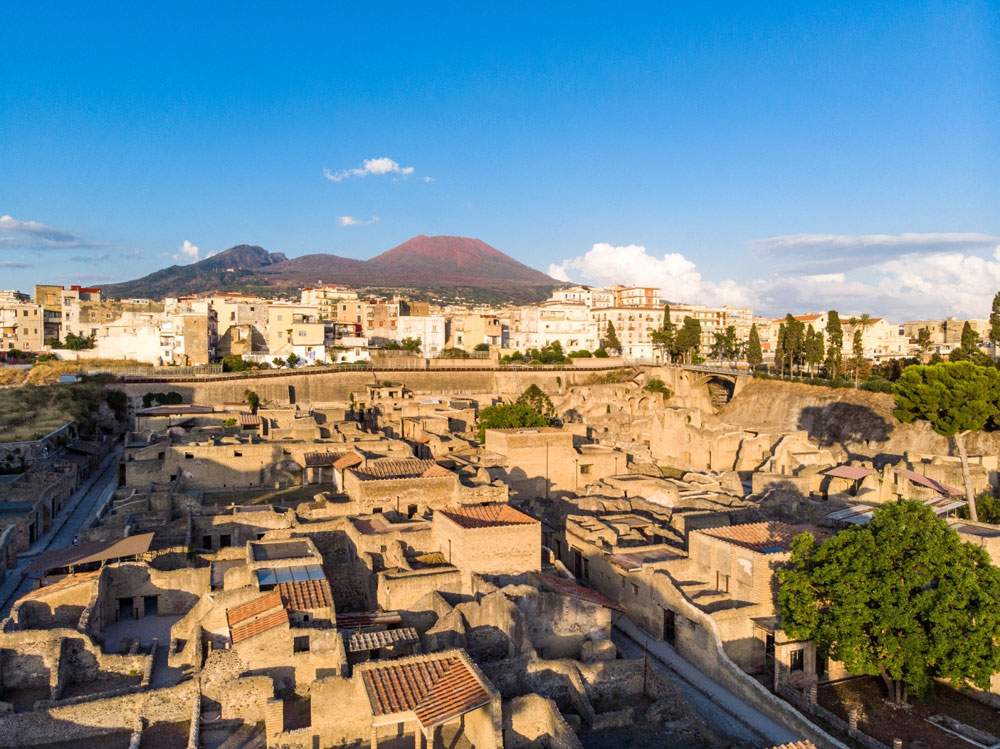New projects in the Strategic Plan for the socioeconomic development of the archaeological areas of Pompeii, Herculaneum and Torre Annunziata. Presiding over the Plan’s management committee today was Culture Minister Dario Franceschini in order to revitalize and redevelop from an environmental and urban planning point of view the nine municipalities involved and enhance their tourist attractiveness.
During the meeting convened by the Director General of the project, Giovanni Di Blasio, various topics were discussed, in particular the presentation and approval of the update of the Strategic Plan, the launch of the Institutional Development Contract “Vesuvio-Pompei-Naples” and its effects on the Strategic Plan, the update on the use of CIPE funds deliberated on February 28, 2018, the outcomes of the public notice aimed at collecting expressions of interest for the inclusion of new projects in the Strategic Plan.
The central point of the meeting was theupdate of the Plan prepared by the Greater Pompeii Unit, which the committee unanimously approved in full agreement with the local authorities involved. As a result, new projects worth 900 million euros were approved, including 594 million euros for interventions already financed and 337 million euros for interventions to be financed.
The most significant updates concern the realization of the railway hub in Pompeii (30.6 million euros); the conversion of the Torre Annunziata - Castellammare di Stabia - Gragnano railway line into a light tramway (33 million euros); the redevelopment of the Villa Favorita complex with Bourbon wharf in Herculaneum (49 million euros); and the redevelopment of the former Royal Arms Factory “Spolettificio dell’Esercito” in Torre Annunziata; the definition of the System of interventions for the completion of the sewage and collection schemes of the municipalities in the area affected by the UNESCO Site Management Plan (113 million euros); the implementation of interventions on the cultural heritage identified in the framework of the Strategic Plan (10 million euros); the EAV Pompeii Santuario urban railroad compatibility with a new route for the connection (67 million euros); and the remodulation of the Grand Project "Completion of the redevelopment of the Sarno River (from 217 to 402 million euros).
New proposals arrived from the area were also presented, including the Vesuvius Cabinovia (53 million euros) - Municipality of Herculaneum; the completion of the general program for the enhancement of the Portici Royal Site (71 million euros) - Metropolitan City of Naples.
Finally, the committee discussed the implementation of interventions proposed by the territory regarding environmental-landscape redevelopment and defense works of the coastal strip and urban-environmental regeneration of the waterfront (twenty interventions for about 275 million euros); redevelopment and regeneration of the degraded building fabric (twenty-five interventions for about 158 million euros).
The committee was also updated with respect to what has been financed by the “Vesuvius-Pompeii-Naples” Institutional Development Contract, which identifies the Project Director General of the Pompeii Grand Project Unit as the Ministry of Culture’s single point of contact for monitoring, evaluation and control of the Strategic Plan interventions financed by the CIS and for the implementation of the fourteen projects financed directly by the MiC for about 73 million euros that have flowed into the CIS.
“Pompeii is a story of redemption, a battle won that shows that when people in the country work as a team, and believe in it, they can truly change the destiny of the territories,” said Minister Franceschini. “A great deal has been done in Pompeii from a legislative, financial and management point of view, and now this site has become a model recognized by UNESCO and the European Union of how to operate and use community resources. Pompeii is a symbol of the change that can be achieved throughout the Mezzogiorno. The implementation of the Strategic Plan will now be the great challenge for the environmental and urban revitalization and redevelopment of the whole territory, including that outside the archaeological areas.”
“With the Sogno di volare (I Dream of Flying) project, which was launched this year and will continue in the coming years, we have entered a concrete phase of implementation and implementation of the strategic plan, through the direct involvement of young people from the area in Park activities. 80 students from local schools have been engaged in the Park’s first theatrical production by bringing a play by Aristophanes to the stage of Pompeii’s grand theater, acquiring and contributing to the spread of cultural heritage awareness to their immediate surroundings,” explained Pompeii Archaeological Park Director Gabriel Zuchtriegel. “An action of direct and unmediated awareness and promotion of cultural places and their territory. Similarly, the enhancement of the green areas of the Park’s sites, through the project of Azienda Agricola Pompei will see a strengthening of synergies with different actors for first local, with an important relapse at the economic level.”
“The Herculaneum Archaeological Park has benefited greatly from CIPE and CIS funds, and it is thanks to the Strategic Plan that we have been able to strengthen actions to protect the UNESCO World Heritage site, but also expand the cultural offer for visitors. On the basis of the first completed projects, we have already collected the first results in terms of employment spin-off and increased stay in the area by tourists. We must continue to move toward a commitment to the enhancement of territories, so that cultural sites do not remain isolated but increasingly represent a real driver of development and growth,” added Francesco Sirano, director of the Herculaneum Archaeological Park.
 |
| MiC, new 900 million euro projects approved in archaeological areas of Pompeii, Herculaneum and Torre Annunziata |
Warning: the translation into English of the original Italian article was created using automatic tools. We undertake to review all articles, but we do not guarantee the total absence of inaccuracies in the translation due to the program. You can find the original by clicking on the ITA button. If you find any mistake,please contact us.